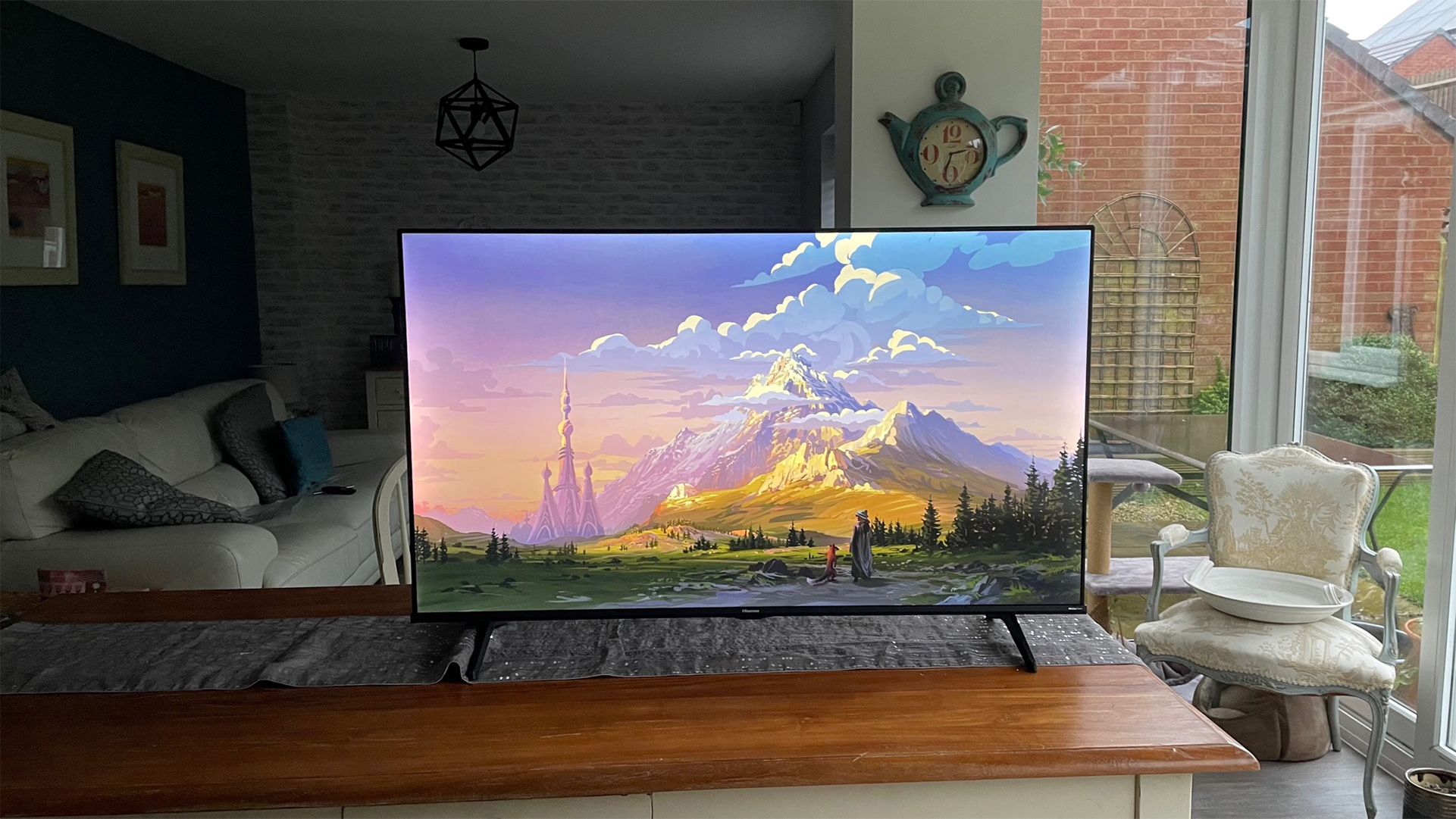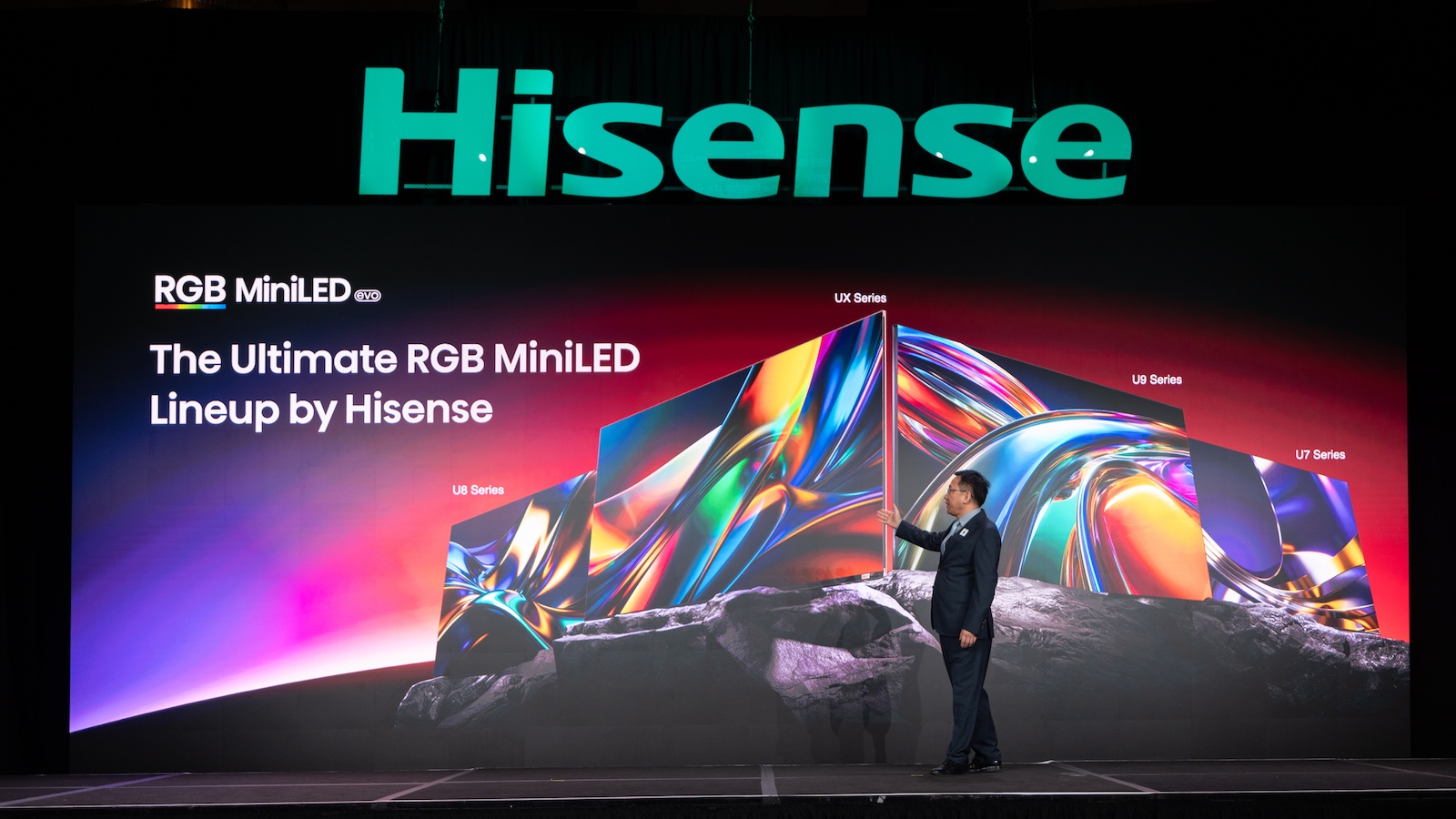What Hi-Fi? Verdict
The 50A6KTUK is brighter and more richly saturated than expected – but this arguably does it more harm than good
Pros
- +
Incredibly cheap for a 50-inch TV
- +
Good smart system
- +
Brighter than its smaller sibling
Cons
- -
Slightly crude colour handling
- -
Limited viewing angles
- -
Awkward black levels
Why you can trust What Hi-Fi?
The Hisense 50A6KTUK is a perfect example of why we often try to review more than one TV from a brand’s range, particularly at the budget end of the market. For, despite sporting the same feature list, a similarly eye-catchingly low price and almost the same design as its recently reviewed 43-inch sibling, the 50A6KTUK turns out to be a quite different performer.
Price

Priced at just £279 in the UK for a 50-inch, 4K screen with HDR support, the 50A6KTUK could be a huge bargain – provided, of course, that it isn’t a washout on the picture and sound quality front.
We’ll get into that later, but there’s no doubt that if we place its price alongside its features and specifications, its on-paper value proposition is off the charts. None of its 4K resolution, HDR (including Dolby Vision), VIDAA smart system, VA panel and direct LED lighting features could ever be necessarily expected on a 50-inch TV for so little money, yet they’re all present and correct on the 50A6KTUK.
While there’s a huge range of screen sizes available for the A6KTUK range in the UK, Australia only carries 58- and 70-inch versions, while the US doesn’t get the A6KT range at all.
Design
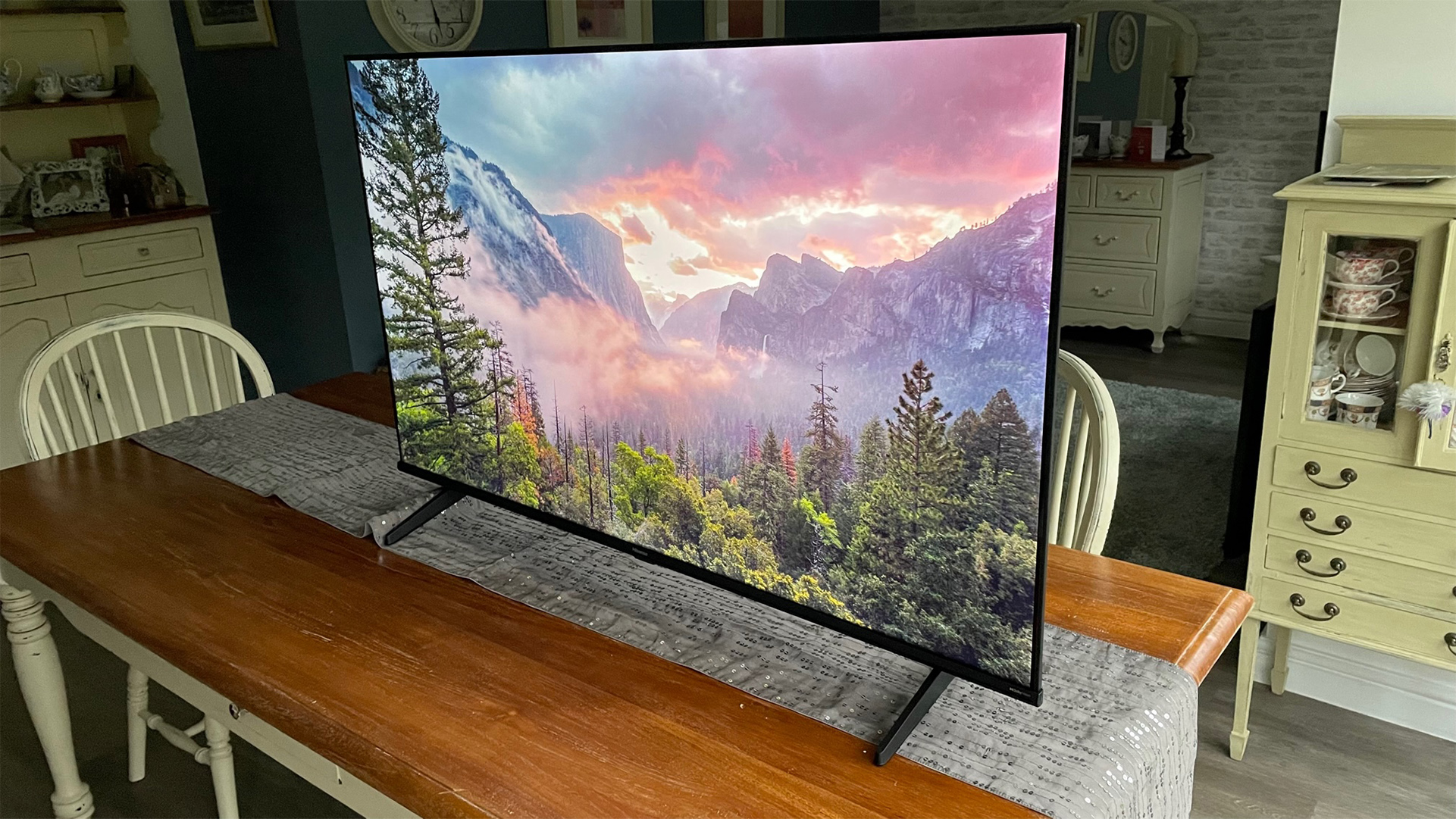
While the 50A6KTUK won’t win any beauty pageants, it also doesn’t look as cheap as it is. Three sides of its frame are on-trend narrow, and even its chunkier bottom edge manages to make a statement out of its relative largesse by protruding further forward and sideways than the rest of the bezel, as well as just hanging lower.
While the 50A6KTUK’s screen frame is fairly slender, its rear is anything but. While the rather industrial (not necessarily in a bad way) sculpting of its rear panel features a few areas where it becomes fairly slim, much of it sticks out far more than the rears of most TVs we see these days. Even Samsung’s budget UE43CU8000 rival is only a fraction as deep as this Hisense model.
Aside from perhaps not making the 50A6KTUK an ideal wall mounting option, though, there’s no reason why its chunky rear should be particularly off-putting. In fact, given the problems the Samsung UE43CU8000 had getting good picture and sound quality from its ultra-slim design, the Hisense model’s bigger rear is arguably a promising positive for AV fans rather than an off-putting negative.
The latest hi-fi, home cinema and tech news, reviews, buying advice and deals, direct to your inbox.
Features
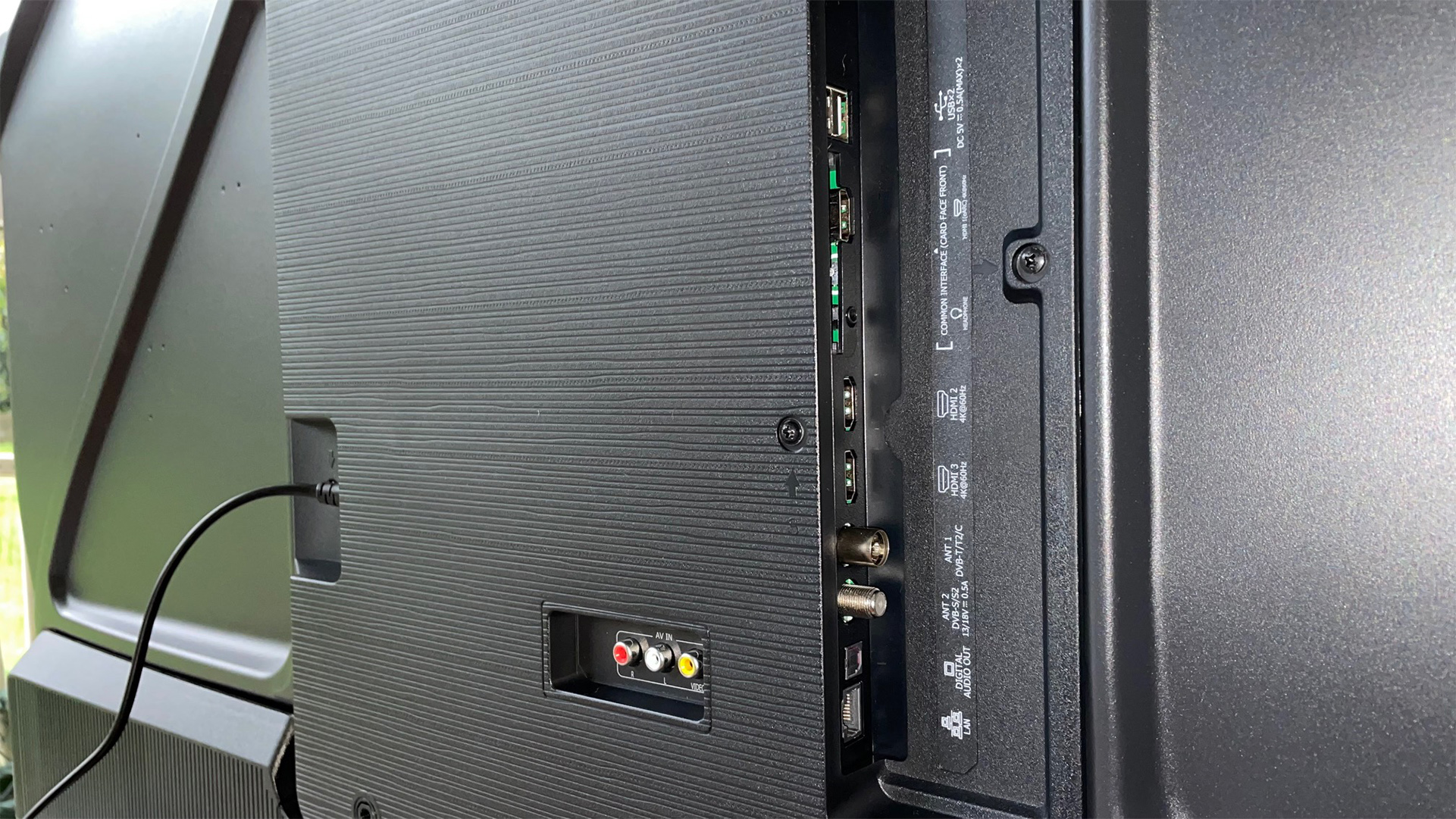
The 50A6KTUK is built around a 50-inch VA-type of LCD panel, illuminated by an array of LEDs positioned directly behind the screen. This represents a strong start given the natural contrast advantages experience has taught us to expect from both VA panels and direct LED lighting.
The 50A6KTUK retains a native 4K resolution despite its affordability, too, and impressively supports three of the ‘big four’ high dynamic range formats: HDR10, HLG and Dolby Vision, the last of which provides extra scene-by-scene image data to help compatible TVs deliver more accurate and dynamic looking pictures. Some websites suggest that the 50A6KTUK supports the HDR10+ format too, but we never got this to work with any of our usual HDR10+ sources.
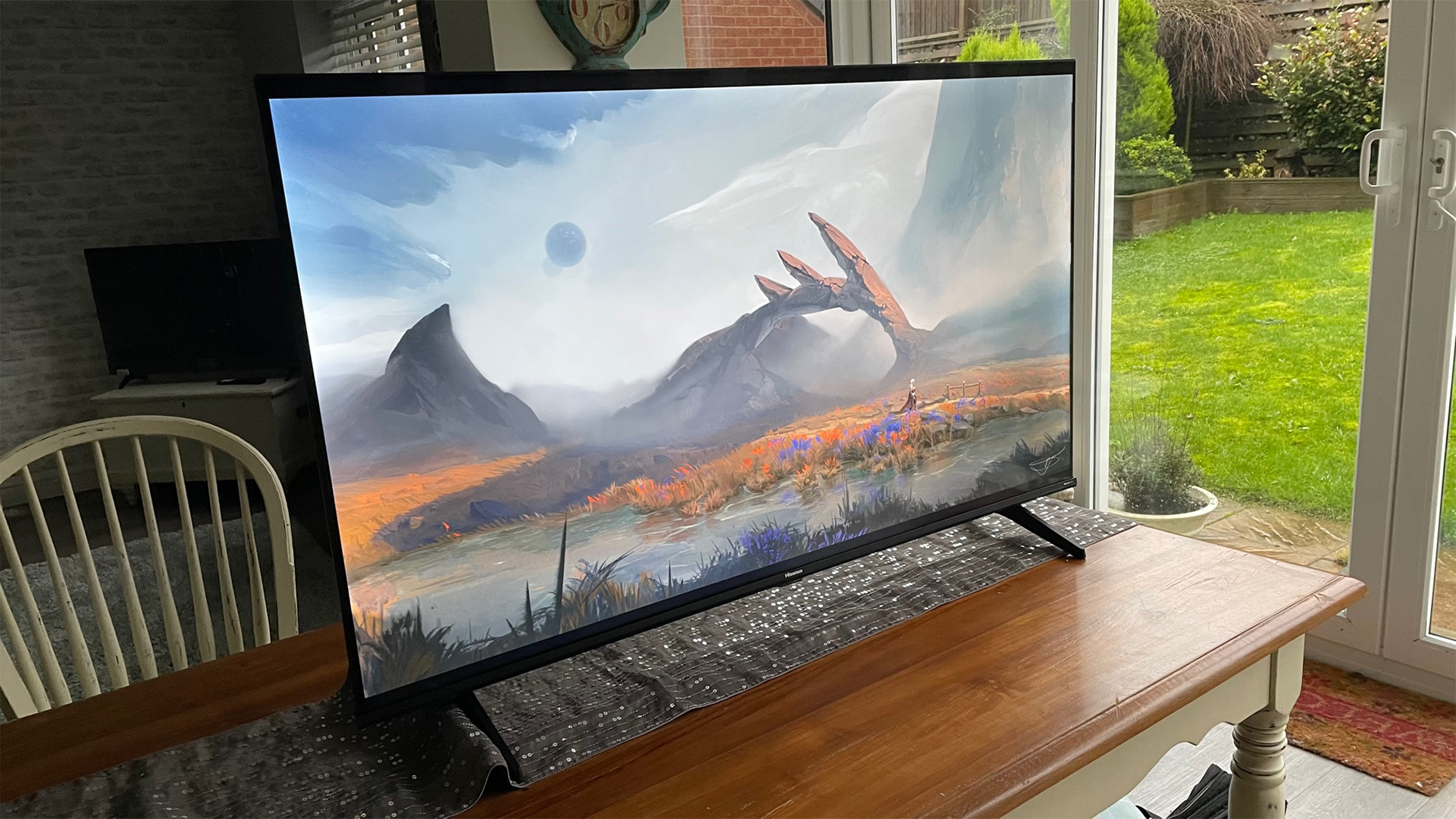
Screen size 50 inches (also available in 43, 55, 58, 65, 70, 75 and 85 inches)
Type LCD
Backlight Direct LED
Resolution 4K
HDR formats HLG, HDR10, Dolby Vision
Operating system VIDAA
HDMI inputs x 3
Gaming features ALLM
ARC/eARC eARC
Optical output? Yes
Dimensions 65 x 112 x 8cm
Remarkably for such a cheap TV, the 50A6KTUK attempts to get the maximum performance value from its promising hardware set-up with an AI-backed processing system. This has two elements; an optional AI Optimisation setting that draws on deep learning to try and select the best picture ‘look’ on a frame-by-frame basis for whatever type of source material you play into the TV, and an unusual Enhanced (ACR) picture preset that Hisense claims uses your viewing ‘data’ to automatically enhance both picture and sound quality – presumably to suit your preferred settings and tastes.
During the time we had with the 50A6KTUK, though, we struggled to see the Enhanced (ACR) preset doing anything to distinguish itself in picture terms from Hisense’s regular Standard, Day, Night and Dynamic picture presets. Nor did it really give us any reason to switch away from the more obvious charms of the TV’s Standard and Theater sound mode options.
The 50A6KTUK notionally carries some motion processing too, though oddly this is perpetually greyed out when playing 24p movie content.
If you’re looking for a TV to use as an affordable gaming monitor as well as a TV, the 50A6KTUK has one or two things going for it. It has an input lag of just 10ms if you’ve got its Game mode activated, and it supports the HDMI ALLM feature, where the TV can tell when a connected console or PC is playing a game and switch into its fast-responding Game mode automatically.
Not surprisingly given how cheap it is, the 50A6KTUK’s panel only runs up to 60Hz, so there’s no support for 120Hz game feeds at either 4K or HD resolutions. Nor is there any support for VRR or Dolby Vision gaming – but none of these features are found on any other ultra-affordable TVs, either.
The only HDMI 2.1-generation feature the 50A6KTUK supports aside from ALLM is eARC, which enables the TV to pass sound on to soundbars or AV receivers.
The 50A6KTUK’s other connections include a pair of USBs, an optical digital audio output, the RF tuner input, a LAN port and, unusually, a composite video input accompanied by stereo audio coaxial inputs. Plus there are both wi-fi and Bluetooth (v4.2) wireless options, complete with support for the Apple Airplay and Google Home systems.
Hisense uses its own VIDAA platform for the 50A6KTUK’s smarts. Despite running more sluggishly on this budget model than it does on Hisense’s more premium models, it’s a more than satisfactory solution for such a cheap TV, delivering as it does all of the main streaming platforms most users will want (Apple TV+, Prime Video, Netflix, Disney+, YouTube, and all the UK’s main terrestrial broadcaster catch up apps, including the Freeview Play ‘wrapper’ app) within an easy to use if not particularly glamorous interface.
Picture
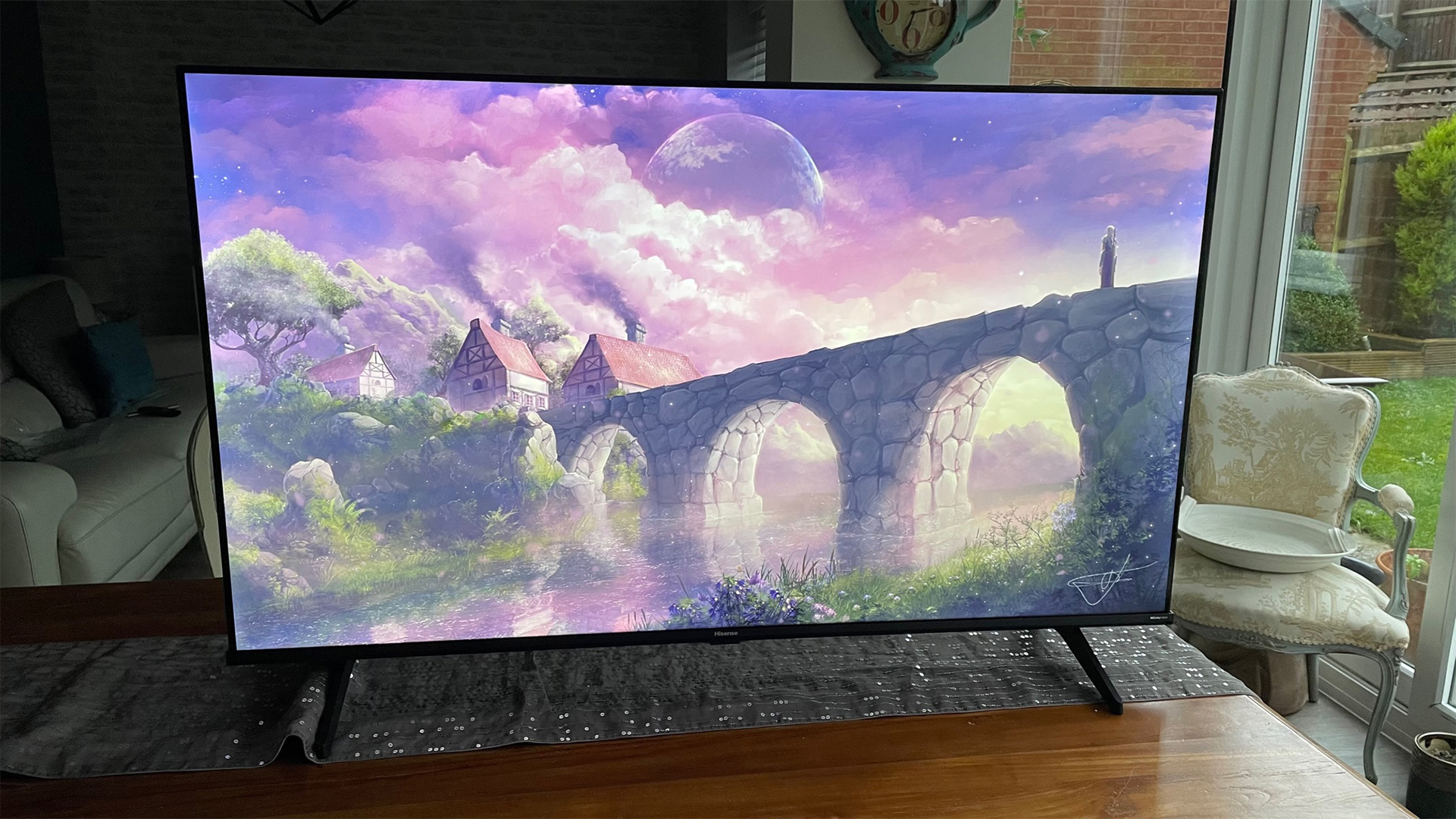
While some aspects of the 50A6KTUK’s picture performance are reminiscent of its recently reviewed 43-inch sibling, there are some distinct differences too.
The first one we notice is that the 50A6KTUK is clearly brighter than its smaller sibling. You can immediately feel this in both the highlights and ‘baseline’ brightness of the 50-inch model’s HDR images, which give you more of a sense of a step up as you switch from SDR to HDR content.
This isn’t to say the 50A6KTUK is bright enough to deliver anything like a full-blooded HDR experience of the sort associated with much more expensive TVs; it isn’t. Not by a long chalk. But there is at least an easily noticeable step up in HDR impact from the 43A6KTUK.
Despite delivering a slightly more impactful HDR ‘look’, though, the 50A6KTUK’s brightness doesn’t ultimately feel like an advantage over the smaller model. Partly because it makes the ‘inner frame’ of extra light that runs around the image’s edges more noticeable during dark scenes than it is with the smaller screen, and partly because it prevents the 50A6KTUK from producing as deep and convincing black levels as the smaller screen. In fact, in the TV’s default settings, black levels look really pretty average.
The only way we manage to significantly improve black levels on the 50A6KTUK is to set its Adaptive Contrast option to ‘High’. But doing this also results in both distracting brightness fluctuations and a loss of shadow detail in dark areas. The 43A6KTUK, in comparison, gives good black levels and backlight stability for a budget TV with its Adaptive Contrast set to a more balanced and ‘calm’ Medium setting.
The 50A6KTUK’s extra brightness also makes us feel more aware of clipping in the very brightest parts of HDR pictures than we were with its 43-inch sibling.
Another point of difference between the 50A6KTUK and 43A6KTUK is colour. The bigger screen enjoys noticeably more vibrant saturations, especially when using its Standard or Dynamic picture presets. Again, though, while this initially feels like an advantage, it soon becomes clear that the extra vibrancy comes at the expense of some tonal subtlety. Trees and meadows, for instance, look ‘clumpy’ rather than their leaves and blades of glass enjoying the same definition they enjoy on the cheaper model. Colour tones also look generally less natural and balanced, with greens in particular tending to look a little radioactive.
The 50A6KTUK suffers a little less than its 43-inch sibling with motion blur, leaving its pictures more consistently sharp and ‘4K’. But only by a little; its pictures still tend to look softer even with native 4K content than they do on most 4K TVs that come our way these days.
One area where the 50A6KTUK’s differences with the 43A6KTUK deliver a more all-round positive pay-off is gaming, as the more defined colour palette and starker contrast of game sources get more value from the bigger screen’s advantages while exposing the downsides less.
It’s important to say at this point, too, that while the 50A6KTUK suffers in comparison with its smaller sibling once you look beyond its surface charms, it’s not a bad model by the standards of the ultra-cheap TV world at large. It’s just frustrating that it lacks some of the balance and precision that makes the 43A6KTUK such a bargain.
Sound

While the 50A6KTUK’s pictures differ more than expected from those of the 43A6KTUK, its 2 x 8W audio system sounds pretty much identical. Complete with the same pros and cons.
So on the upside, again the best thing about it is the surprisingly wide and loud soundstage it can create with its Theater sound mode engaged. There’s even a vague sense of the outer extremities of the Theater sound reaching around to the side of you.
Details aren’t spread across the Theater mode splay as accurately and consistently as we’d like, and the central portion of the soundstage doesn’t project forward as well as the edges do. But voices and on-screen effects are locked in the middle of the soundstage where they should be, and manage to sound quite clear and clean despite how far other aspects of a film mix are being pushed beyond the TV’s limits.
The 50A6KTUK doesn’t deliver much in the way of bass depth, but at the same time it doesn’t succumb to phutting or buzzing distortions with bass-heavy scenes. Similarly, while it doesn’t have the power or frequency response to expand its sound to keep up with action or horror set pieces as they grow to a crescendo, it does at least have enough about it to stop such moments from sounding harsh, or collapsing in on themselves.
Verdict
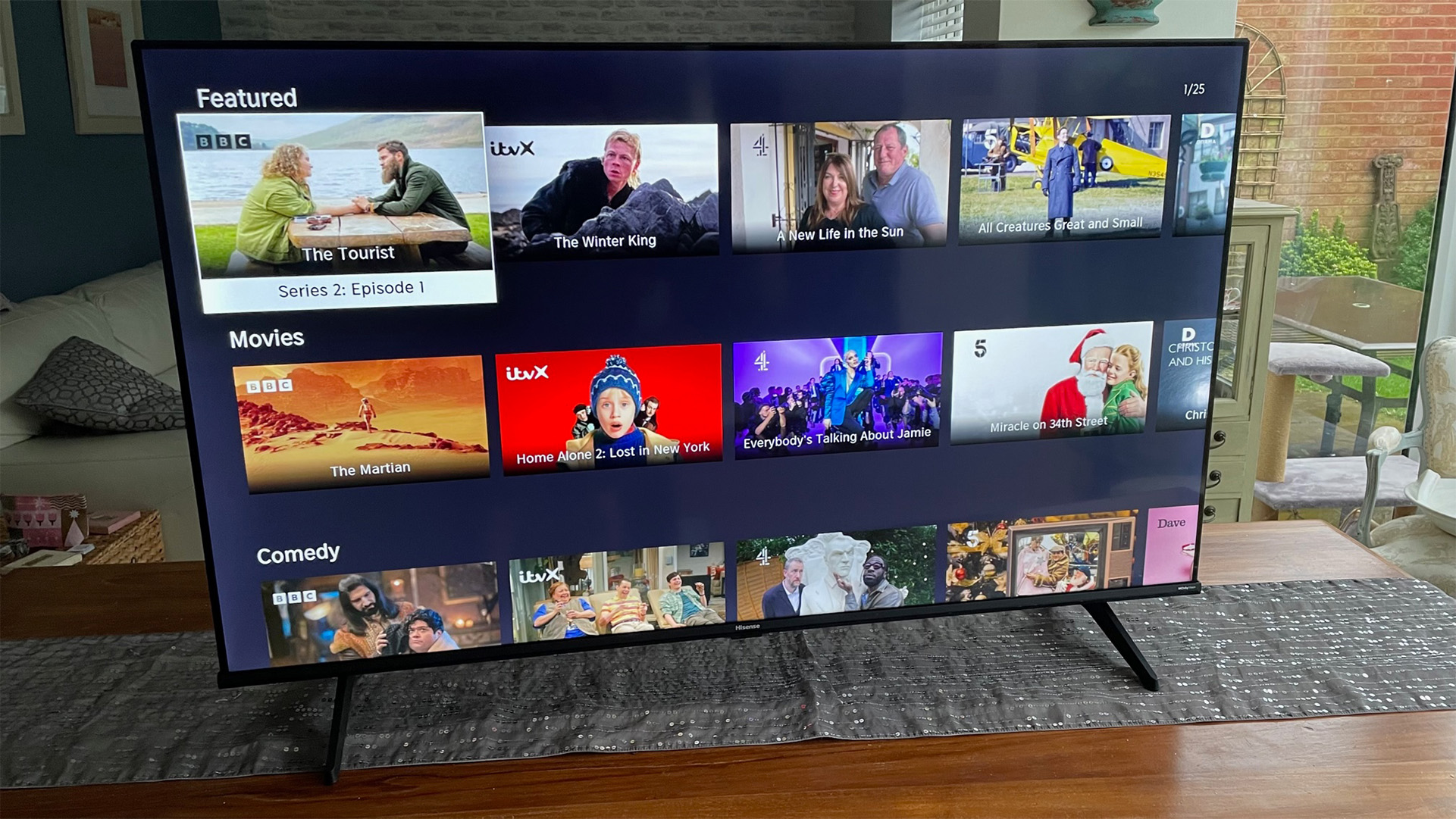
The Hisense 50A6KTUK is a solid effort for its money. Its pictures are brighter and more vibrant than those of many budget rivals, and its smart system is both easy to use and surprisingly rich in content. In the end, though, its more aggressive approach to pictures actually makes it less consistent and rewarding than its own 43A6KTUK sibling.
SCORES
- Picture 3
- Sound 3
- Features 4
MORE:
Read our review of the Hisense 43A6KTUK
Also consider the Sharp 55FN2KA
Read our Samsung UE43CU8000 review
Best 50-inch TVs: top sets for every budget
What Hi-Fi?, founded in 1976, is the world's leading independent guide to buying and owning hi-fi and home entertainment products. Our comprehensive tests help you buy the very best for your money, with our advice sections giving you step-by-step information on how to get even more from your music and movies. Everything is tested by our dedicated team of in-house reviewers in our custom-built test rooms in London, Reading and Bath. Our coveted five-star rating and Awards are recognised all over the world as the ultimate seal of approval, so you can buy with absolute confidence.
